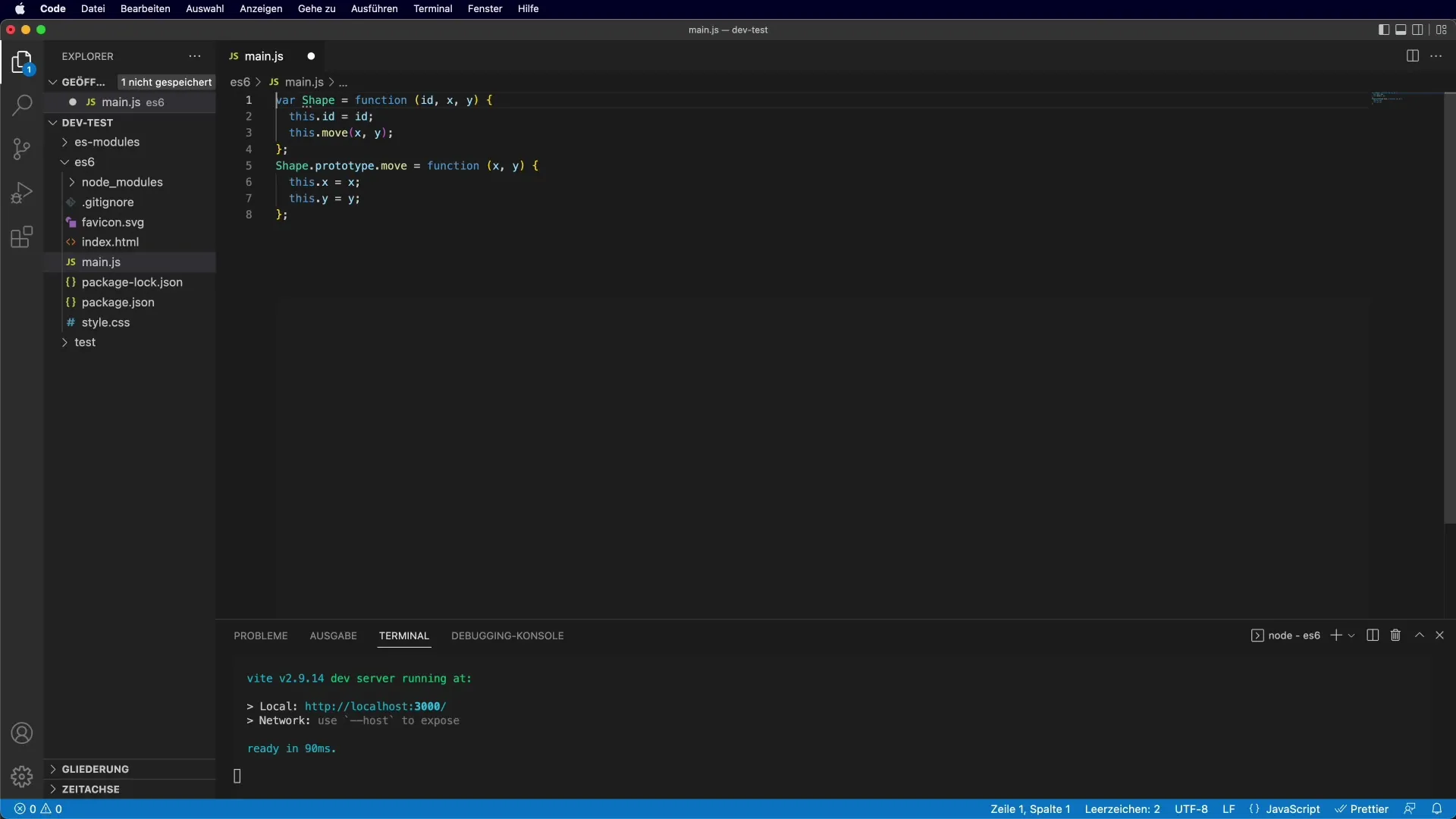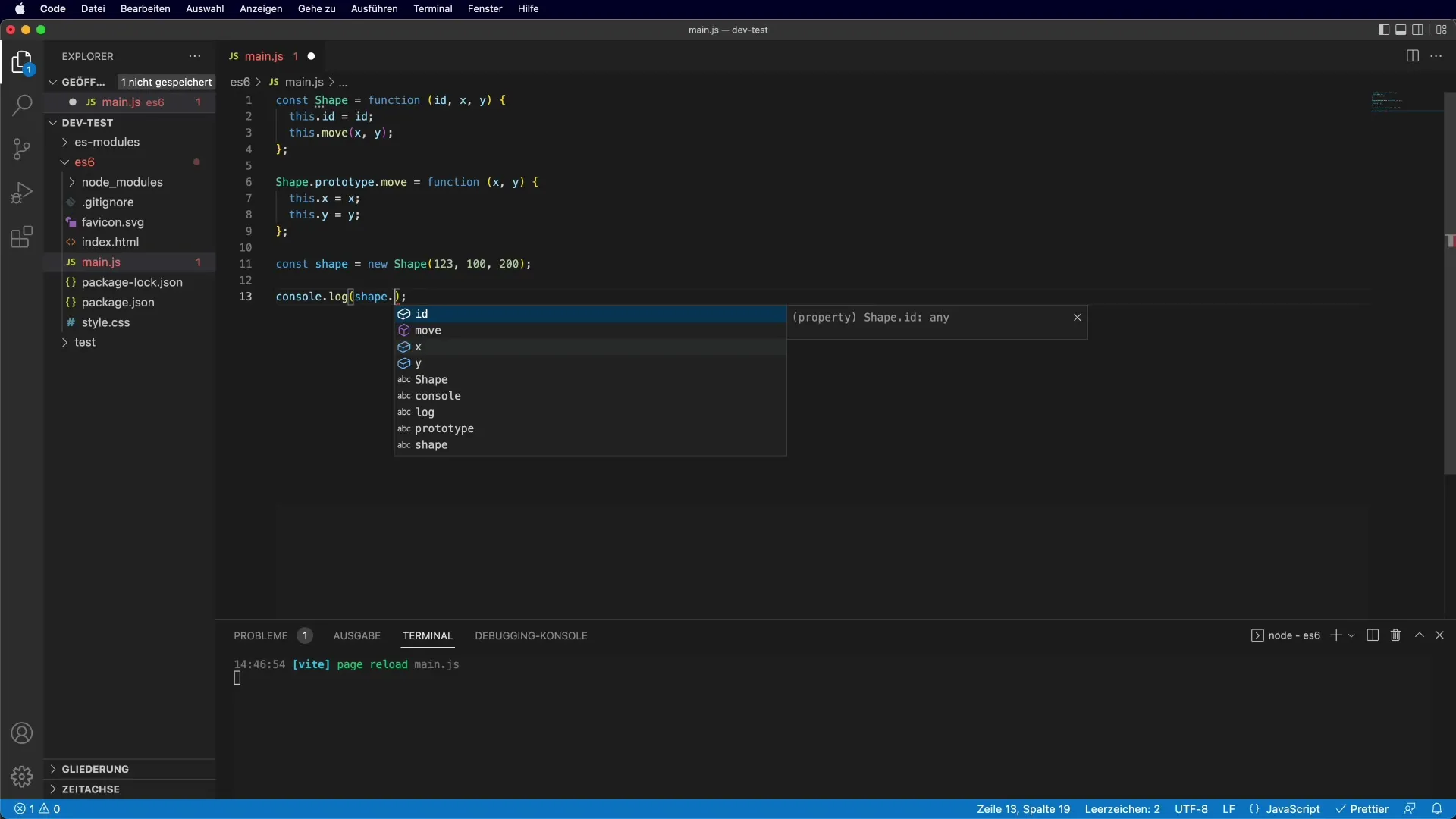JavaScript has evolved significantly over the years. In particular, with the introduction of ES6, programming with classes has become considerably easier. The old method of creating classes using prototypes and constructor functions was often cumbersome and error-prone. In this tutorial, you will learn how to effectively use the new class syntax and what differences exist between the old and new notation. Additionally, you will learn how to extend your class structure through inheritance.
Key Findings
- The new class syntax allows for a clearer and more compact declaration form.
- Using constructors is simpler and doesn't require separate prototypes.
- The functionality behind the class syntax remains prototype-based.
Step-by-Step Guide
1. Understanding the Old Syntax
To recognize the advantages of the new class syntax, we first look at the old method. A constructor function was created, and the methods were added via the prototype.

If you want to create a new object, this is done with new Shape(1, 100, 200). Then you can use the object shape to access the properties.
2. Displaying the Values
To ensure that our object instance works correctly, we output the properties x and y.

3. Introducing the New Class Syntax
Now we switch to the new class syntax, which is available from ES6.
The changes are significant: you no longer need a separate prototype. Instead, you define all methods within the class itself.
4. Creating Objects with the New Class
Creating an object with the new syntax is done just as before. You use new to create an instance of the Shape class.
5. Using the New Class
The use of the newly defined class is identical to the old method. You can use the instance shape1 to access the values and use the move method.
6. Inheritance in Classes
Another advantage of the class syntax is the possibility of inheritance. If you want to create a new class that inherits from an existing class, you can use the extends keyword.
In this case, the constructor of the child class calls super() to call the constructor of the parent class. This allows you to use the properties of Shape while defining unique properties for Rectangle.
7. Conclusion on Class Declaration
The class syntax not only makes your codebase clearer but also allows for a more structured approach when working with object-oriented concepts. You can not only create classes but also build complex inheritance hierarchies, making your code more flexible and maintainable.
Summary – The New Class Syntax in JavaScript: ES6 to ES13
In this tutorial, you learned how to effectively use the new class syntax in JavaScript from ES6 to ES13. The old method of class creation was often tedious and error-prone, while the new syntax allows for a clear and simple structure. You have also learned the basics of inheritance through the extends syntax to further expand your classes.
Frequently Asked Questions
What is the difference between the old and new class syntax?The old method uses constructor functions and prototypes, while the new syntax simplifies the definition and usage of classes.
Why should I use the new class syntax?It provides a clearer, more compact, and intuitive way to define classes, improving code maintenance and readability.
How does inheritance work with class syntax?Your class can inherit functionalities from another class by using the extends keyword, calling the constructor of the parent class with super().


